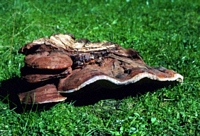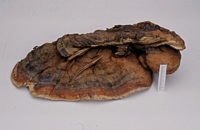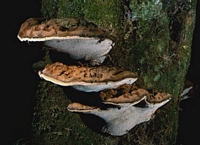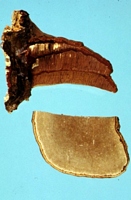Ganoderma sp. "Awaroa"
|
 | |  | This species has a softer, lighter fruiting body than those of other NZ Ganoderma species, and has a partly shiny (laccate) upper surface. Up to 30 cm across. It has been recorded from only four collections, all from the Waikato, all growing on |
|

|

|
Ganoderma applanatum
|
 |
The most common species of Ganoderma, found on wood of a wide range of trees both native and introduced, and up to large size (to 60 cm across). It is difficult to distinguish this species from G. australe. Helpful features without the a |  | |
|

|

|
Ganoderma sp. "Awaroa"
|
 | |  | This species has a softer, lighter fruiting body than those of other NZ Ganoderma species, and has a partly shiny (laccate) upper surface. Up to 30 cm across. It has been recorded from only four collections, all from the Waikato, all growing on |
|

|

|